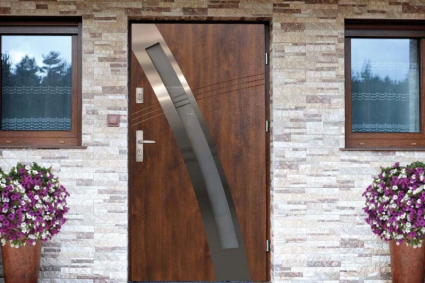
Doors and windows, often taken for granted, are essential architectural elements that can transform a mundane structure into a captivating masterpiece. These portals serve as gateways, connecting our inner sanctuaries to the outside world, while also serving as a canvas for artistic expression. In this article, we delve into the enchanting realm of doors and windows, exploring their historical significance, their role in design, and the unique stories they can tell.
From ancient times to the present day, doors have played a pivotal role in human history. They have symbolized the threshold between the public and the private, the entrance to opportunity, and the gateway to new beginnings. The grand doors of ancient civilizations, adorned with intricate carvings and towering arches, hinted at the opulence and majesty beyond. Today, doors continue to make a statement, whether through their sleek modern designs, vibrant colors, or traditional elegance.
Windows, on the other hand, provide a glimpse into the world beyond our immediate surroundings. They invite natural light to flood our interiors, creating a sense of openness and serenity. Windows are the frames through which we observe the beauty of nature, capturing breathtaking vistas, inspiring landscapes, and awe-inspiring city skylines. They offer a connection to the outside world, while also providing a respite from it.
Designers and architects understand the power of doors and windows in shaping the ambiance and character of a space. A well-designed door can create a dramatic entrance, instantly captivating visitors and setting the tone for what lies beyond. Translucent or stained glass windows can transform a room, bathing it in a kaleidoscope of colors and casting captivating patterns across the floor. The placement and size of windows can affect the flow of natural light, influencing the mood and energy within a space.
Each door and window tells a unique story, reflecting the culture, history, and personal tastes of its creators. Consider the ornate wooden doors of a Moroccan riad, meticulously carved with geometric patterns that celebrate Islamic artistry. These doors not only provide security and privacy but also stand as an emblem of tradition and craftsmanship. In contrast, the sleek, minimalist windows of a contemporary skyscraper reflect the cutting-edge design and innovation of modern architecture.
Doors and windows also serve as a canvas for artistic expression. Artists and artisans have long recognized the potential of these structures to communicate emotions, tell stories, and inspire awe. Intricate stained glass windows in cathedrals depict biblical narratives with vibrant hues, capturing the essence of faith and spirituality. Sculpted wooden doors in historic mansions showcase the skill and creativity of craftsmen from a bygone era.
In recent years, sustainability and energy efficiency have become integral considerations in architectural design. Doors and windows have evolved to meet these demands, incorporating innovative materials and technologies. Double-glazed windows, for example, provide enhanced insulation, reducing energy consumption and minimizing environmental impact. This marriage of functionality and aesthetics paves the way for a more sustainable future.
In conclusion, doors and windows are not merely functional elements of a structure but works of art that have the power to inspire and transform. They are a testament to human ingenuity, cultural heritage, and the marriage of form and function. So, the next time you pass through a door or gaze out of a window, take a moment to appreciate the artistry and craftsmanship that went into its creation. These humble portals hold the key to a world of elegance and inspiration.




















